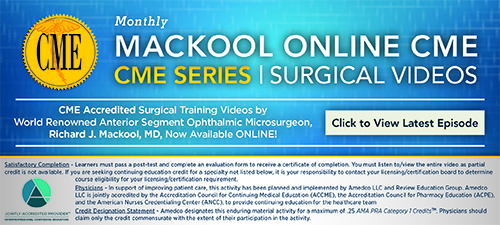Industry News
LumiThera Completes Patient Enrollment in LIGHTSITE III
LumiThera completed enrollment in its U.S. multicenter clinical study in non-neovascular age-related macular degeneration patients. LIGHTSITE III, using the Valeda Light Delivery System is an FDA-, IDE-approved prospective, randomized, double-masked trial that will follow 100 patients with dry AMD over the course of two years. In addition to safety, key efficacy endpoints include visual acuity, contrast sensitivity and reduction of drusen deposits.
Read more.
NIH Grants Connectyx Exclusive Worldwide License to Repurpose Metformin
Connectyx Technologies entered into an exclusive patent license agreement to practice inventions contained within a group of patent applications with the National Eye Institute of the National Institutes of Health, including the repurposed use of metformin to treat retinal degeneration. Research has shown that metformin can activate AMP-activated protein kinase, reduce vascular endothelial growth factor secretion and correct baseline calcium levels in patients’ retinal pigment epithelium cells. The new treatment indications will require reformulating the drug into an eye drop (or other topical delivery method) or an injectable. Read more.
New Therapeutic Approach Aimed at Restoring Vascular Health & Reversing Age-related Eye Disease
Unity Biotechnology announced preclinical research revealing a novel mechanism for treating age-related eye diseases by restoring retinal vascular health. In a study, featured in the April issue of Cell Metabolism, researchers from Unity and the University of Montreal demonstrated that diseased blood vessels in the retina trigger molecular pathways associated with aging, collectively termed “cellular senescence.” The researchers used animal models and human samples to identify a molecular target, Bcl-xL, that’s highly expressed in diseased retinal blood vessels. Targeting these senescent cells with a single dose of Unity’s Bcl-xL small molecule inhibitor led to selective elimination of diseased vasculature while enabling functional blood vessels to reorganize and regenerate. Unity is conducting a Phase I clinical trial of UBX1325, a small molecule inhibitor of Bcl-xL, for the treatment of diabetic macular edema. Read more.
J&J Vision Donates to Cataract Charity
Johnson & Johnson Vision announced that it’s donating $20,000 to the Himalayan Cataract Project (HCP)|Cure Blindness in honor of the organization’s dedication to spread cataract awareness. Read more.
| |
Complimentary CME Education Videos
|
|
|
|
Prevent Blindness to Hold Annual Eyes on Capitol Hill Advocacy Event
Prevent Blindness will be holding its sixteenth annual Eyes on Capitol Hill advocacy event virtually on Feb. 24 and 25. The program brings together patients, caregivers, public health workers and medical professionals with their elected officials to educate lawmakers and their staff on vision issues, including equitable access to quality eye care, health disparities in the prevalence of vision disorders, and the importance of sight-saving research and surveillance. Learn more.
News from Gemini Therapeutics
Gemini Therapeutics completed enrollment in its Phase IIa ReGAtta study, a dose escalation trial of GEM103, a recombinant human complement factor H (CFH), in dry AMD patients with CFH loss-of-function gene variants. The trial will evaluate safety and tolerability, as well as measures of intraocular pharmacokinetics and disease-relevant biomarkers.
The company also announced the completion of its business combination with FS Development Corp. (Nasdaq: FSDC), a special purpose acquisition company. The resulting combined company will be called Gemini Therapeutics. Read more.
In addition, the company appointed Brian Piekos as chief financial officer. Piekos Piekos joins from AMAG Pharmaceuticals, where he most recently served as executive vice president, chief financial officer and treasurer. Read more.
Reichert Debuts New Website
Reichert Technologies launched a redesigned website in order to improve the user experience. The company says that the website, still located at reichert.com, is streamlined and modern, and has improved functionality that's been optimized for mobile devices. Reichert adds that the site offers improved security, enhanced navigation and "more robust contact capabilities." Read more.